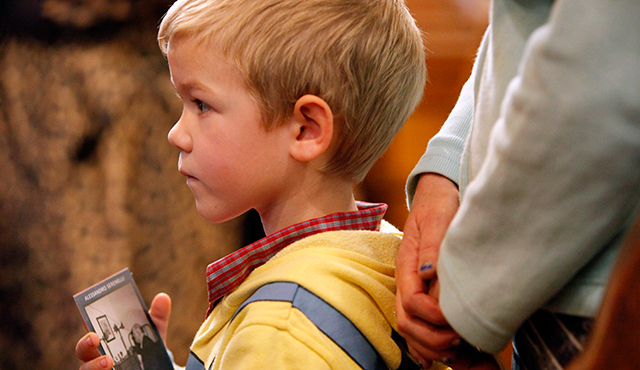Holy cards are a centuries-old Catholic Church tradition. Also called prayer cards, each two-sided or folded small card bears an image of a religious painting or symbol along with a prayer or verse. Now they most often are used as memorial cards to remember the dead, but others commemorate saints’ feast days. The earliest surviving prayer card depicts St. Christopher and dates back to 1423.
Today holy cards distributed at funerals are selected by family members who choose a prayer or verse that has special meaning to their departed loved one, as well as an appropriate piece of art, usually of a saint, the Holy Family or the Blessed Mother. The name, birth and death dates of the deceased are included, sometimes with a brief biography.
Cards collected in family Bibles make a visual family tree in remembrance of loved ones. Some Catholic families use them to share family stories with children, because they provide visual cues that connect youth to different branches of the family.
Holy cards often depict saints and their feast days; so many Catholics organize them by feast date so prayers for intercession can be directed to that day’s saint. Some of the most popular prayer cards feature Our Lady in all her different forms; cards printed in Spanish often depict Our Lady of Guadalupe.
Given as gifts to commemorate events such as First Communion, Confirmation or even a family reunion, the cards are not themselves ‘holy’ unless blessed by a priest. But they provide convenient, easily distributed items that can be personalized as keepsakes. Some Catholics use them as bookmarks in Bibles, devotional books, missals or Liturgy of the Hours prayer books.
As visual reminders of the saints, their messages, and the meaning of their lives and deaths, holy cards are useful tools for remembrance and teaching. While Roman Catholics make up the biggest audience for prayer cards, they are also used by Orthodox Catholics and even some Protestants, although biblical themes are illustrated on cards for the latter.
Anaheim resident Ivette Valenzuela says she uses holy cards to teach her two children, ages 5 and 10 years old, about their Catholic faith in the same way her grandmother did when she was growing up.
“I use the saint cards with my kids,” Valenzuela says. “I have them with me and sometimes if we face difficulties – sickness or worry – I pull them out and tell my kids to ask the saints to help us, to intercede and pray for us. I try to teach them what my grandmother passed on to me.
“That’s why holy cards have such great meaning for me,” she says. “Since I was a little girl my grandmother always had an image of Jesus or a saint around. She had special devotions to saints according to a special need or occasion or problem she encountered.”
Some avid holy card collectors accumulate large numbers of cards and store them in the same plastic protectors used to store baseball cards. Many religious education teachers use holy cards as rewards for students who do well. Volunteers who work with prisoners say that the most popular holy cards in jail depict Mary, the mother of Jesus, who is mother to us all. During World War II, the Head of Christ painting was printed on thousands of pocket-sized cards distributed to members of the American armed forces stationed overseas.
A card depicting St. Jude given to her by her grandmother is Valenzuela’s favorite. It is one of three holy cards she keeps in her wallet. The others are of St. Junipero Serra and Jesus. “St. Jude is important to me because my grandmother had a special devotion to him. I knew that when I had trouble I could pray and he would intercede so that God would hear my prayers.”

